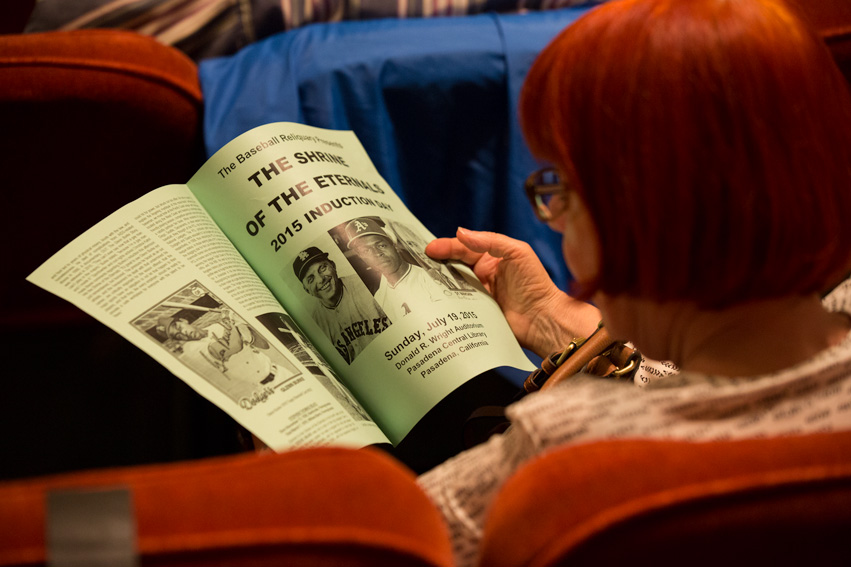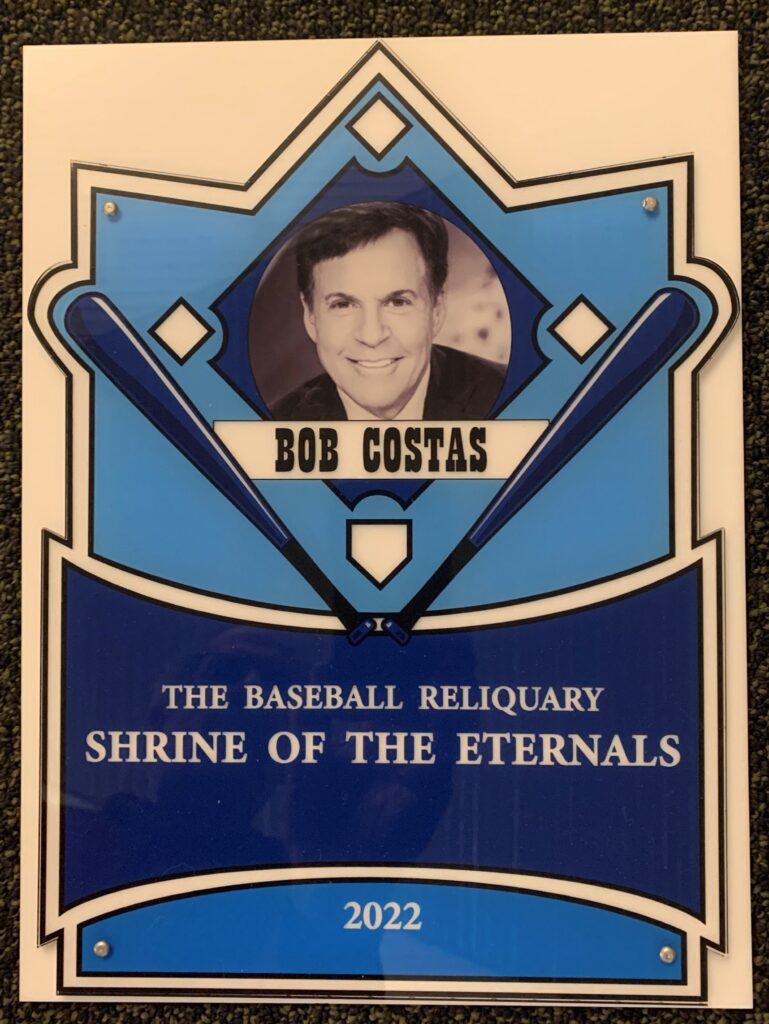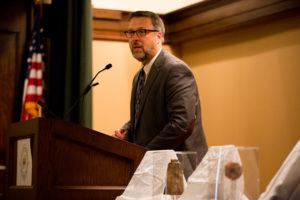The Baseball Reliquary, Inc. has announced its list of fifty eligible candidates for the 2019 election of the Shrine of the Eternals, the membership organization’s equivalent to the Baseball Hall of Fame. This year marks the twenty-first annual election of the Shrine, a major national component of the Baseball Reliquary, a Southern California-based organization dedicated to fostering an appreciation of American art and culture through the context of baseball history. The sixty individuals previously elected to the Shrine of the Eternals are, in alphabetical order: Jim Abbott, Dick Allen, Roger Angell, Emmett Ashford, Moe Berg, Sy Berger, Yogi Berra, Steve Bilko, Ila Borders, Jim Bouton, Jim Brosnan, Charlie Brown, Bill Buckner, Glenn Burke, Roberto Clemente, Steve Dalkowski, Dizzy Dean, Rod Dedeaux, Jim Eisenreich, Dock Ellis, Nancy Faust, Eddie Feigner, Mark Fidrych, Curt Flood, Ted Giannoulas, Josh Gibson, Jim “Mudcat” Grant, Pete Gray, Arnold Hano, William “Dummy” Hoy, Bo Jackson, Shoeless Joe Jackson, Bill James, Dr. Frank Jobe, Tommy John, Bill “Spaceman” Lee, Roger Maris, Marvin Miller, Minnie Minoso, Manny Mota, Don Newcombe, Lefty O’Doul, Buck O’Neil, Satchel Paige, Jimmy Piersall, Pam Postema, Jackie Robinson, Rachel Robinson, Lester Rodney, Pete Rose, Vin Scully, Rusty Staub, Casey Stengel, Luis Tiant, Bob Uecker, Fernando Valenzuela, Bill Veeck Jr., Maury Wills, Kenichi Zenimura, and Don Zimmer.
The Shrine of the Eternals is similar in concept to the annual elections held at the Baseball Hall of Fame, but differs philosophically in that statistical accomplishment is not a criterion for election. Rather, the Shrine’s annual ballot is comprised of individuals – from the obscure to the well-known – who have altered the baseball world in ways that supersede statistics.
On a procedural level, the Shrine of the Eternals differs significantly from the Baseball Hall of Fame in the manner by which electees are chosen. While the Baseball Hall of Fame’s electees are chosen in voting conducted by a select group of sportswriters or committees, the Baseball Reliquary chooses its enshrinees by a vote open to the public. A screening committee appointed by the Reliquary’s Board of Directors prepares a ballot consisting of fifty candidates, on which the membership votes annually. The three candidates receiving the highest percentage of votes gain automatic election.
Among the fifty eligible candidates, eight individuals appear on the Shrine of the Eternals ballot for the first time, and two (Ralph Branca and Joe Schultz Jr.) return after a long absence. The newcomers and newly returned, in alphabetical order, are:
Billy Beane (b. 1962) – The Oakland A’s GM who applied statistical analyses to construct a post-season caliber team
Ralph Branca (1926-2016) – delivered “The Shot Heard ’Round the World” to Bobby Thompson in the 1952 NL playoff game
Tony Conigliaro (1945-1990) – Beaned during a late season game at Fenway in 1967, he spent a year recovering before being awarded Comeback Player of the Year when he returned
Julio Franco (b. 1958) – During his twenty-three year career, he suited up for eight teams, and compiled HOF numbers, finishing with a lifetime average just short of .300
Cleon Jones (b. 1942) — The powerbroker on the “Amazing Mets” and their run to WS victory, he spent a dozen years with the club
Melissa Ludtke (b. 1951) – the courageous journalist who sued MLB to get equal access to locker rooms
Boog Powell (b. 1941) – Former AL MVP who led the Orioles in their pennant years in the early ’70, now well known for his restaurant beyond right field at Camden Yards
Dave Raymond (b. 1956) – The young Phillies staffer who donned the wild green bird costume and became the Phllie Fanatic
Joe Schultz Jr. (1918-1996) – A back-up backstop who became the only manager for the single-season Seattle Pilots s
Justine Siegal (b. 1975) – A breaker of baseball’s glass ceiling becoming the first female coach on a male professional team, she conceived and established Baseball for All to advocate for and train women for leadership roles in baseball
A complete list of all fifty candidates for the 2019 election of the Shrine of the Eternals follows. Election packets, containing ballots and biographical profiles of all candidates, will be mailed to Baseball Reliquary members on April 1, 2019. To be eligible to vote, all persons must have their minimum $25.00 annual membership dues paid as of March 31, 2019.
The three new inductees will be announced in May, with the Induction Day ceremony scheduled for July 2019. In addition to the presentation of plaques to the 2019 inductees, this year’s ceremony will honor the recipients of the 2019 Hilda Award (named in memory of Hilda Chester and acknowledging a baseball fan’s exceptional devotion to the game) and the 2019 Tony Salin Memorial Award (presented annually to an individual dedicated to the preservation of baseball history).
For additional information on the Shrine of the Eternals, contact Terry Cannon, Executive Director of the Baseball Reliquary, at P.O. Box 1850, Monrovia, CA 91017; by phone at (626) 791-7647; or by e-mail at terymar@earthlink.net.
The Shrine Of The Eternals
The number to the right of candidates’ names indicates the number of years on the Shrine of the Eternals ballot.
1. Billy Beane (New!)
2. Kurt Bevacqua (2)
3. Ralph Branca (3)
4. Chet Brewer (20)
5. Bert Campaneris (8)
6. Octavius V. Catto (7)
7. Rocky Colavito (7)
8. Tony Conigliaro (New!)
9. Charles M. Conlon (18)
10. Bob Costas (6)
11. Leo Durocher (5)
12. Luke Easter (5)
13. Lisa Fernandez (19)
14. Charlie Finley (9)
15. Rube Foster (21)
16. Julio Franco (New!)
17. Ernie Harwell (16)
18. Mamie Johnson (6)
19. Cleon Jones (New!)
20. Ted Kluszewski (4)
21. Melissa Ludtke (New!)
22. Effa Manley (21)
23. Dr. Mike Marshall (14)
24. Tug McGraw (16)
25. Denny McLain (6)
26. Fred Merkle (13)
27. Masanori Murakami (2)
28. Hideo Nomo (8)
29. Dave Parker (6)
30. Joe Pepitone (9)
31. Shorty Perez (3)
32. Phil Pote (17)
33. Boog Powell (New!)
34. Vic Power (11)
35. Charley Pride (5)
36. Dave Raymond (New!)
37. Pete Reiser (7)
38. J.R. Richard (20)
39. Bing Russell (4)
40. Annie Savoy (9)
41. Joe Schultz Jr. (2)
42. Justine Siegal (New!)
43. Janet Marie Smith (2)
44. John Thorn (3)
45. Jim Thorpe (2)
46. Mike Veeck (3)
47. Chris von der Ahe (5)
48. Rube Waddell (21)
49. Bill White (2)
50. John Young (7)





